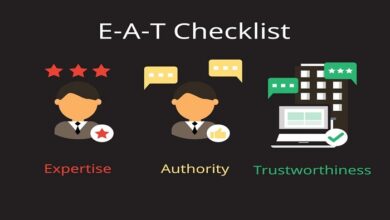
Search Engine Optimization: Tips and Tricks for Improving Your Website’s Visibility in Search Engine Results
Search Engine Optimization (SEO) is the process of improving the visibility of a website or a web page in a search engine’s unpaid results. The higher a website appears in the search engine’s results, the more likely it is to be visited by a user. SEO can be broken down into two main categories: on-page SEO and off-page SEO.
On-Page SEO
On-page SEO refers to the optimization of elements on a website that can affect its ranking in search engine results pages (SERPs). This includes optimizing the website’s content, meta tags, and images.
- Content Optimization: Creating high-quality, relevant, and informative content is essential for SEO. Search engines use complex algorithms to determine the relevance of a website’s content to a user’s query, and high-quality content is more likely to be ranked higher in SERPs.
- Meta Tag Optimization: Meta tags are HTML tags that provide information about a web page to search engines. Title tags and meta descriptions are the most important meta tags for SEO. Title tags should be descriptive and relevant to the content of the page, and meta descriptions should provide a brief summary of the content.
- Image Optimization: Images can also affect a website’s SEO. Optimizing images by compressing them and using relevant alt tags can help improve a website’s load time and search engine visibility.
Off-Page SEO
- Off-page SEO refers to the optimization of elements outside of a website that can affect its ranking in SERPs. This includes backlinks and social media signals.
- Backlinks: Backlinks are links from other websites to a website. Search engines use backlinks as a way to determine the authority and relevance of a website. The more high-quality backlinks a website has, the more likely it is to be ranked higher in SERPs.
- Social Media Signals: Social media signals refer to the number of likes, shares, and followers a website has on social media platforms. Search engines use social media signals as a way to determine the popularity and relevance of a website.
SEO can be a complex and ever-changing field, but by understanding the basics of on-page and off-page SEO, you can improve your website’s visibility in search engine results pages and drive more traffic to your website.
Keyword Research
Keyword research is the process of identifying the keywords and phrases that people use when searching for products or services related to your business. Once you’ve identified these keywords, you can optimize your website’s content and meta tags to rank for those keywords in search engine results pages.
- Use keyword research tools like Google Keyword Planner, Ahrefs, and SEMrush to find relevant keywords.
- Use long-tail keywords, which are more specific and less competitive than short-tail keywords.
- Use keywords in your website’s content, title tags, and meta descriptions.
Technical SEO
Technical SEO refers to the optimization of a website’s technical elements to improve its visibility in search engine results pages. This includes optimizing a website’s structure, code, and load time.
- Optimize Website Structure: A website’s structure should be easy for both users and search engines to navigate. This includes using a clear and logical hierarchy of headings, having a clear navigation menu, and using breadcrumb navigation.
- Optimize Code: A website’s code should be clean and well-organized, with proper use of HTML tags and meta tags.
- Optimize Load Time: A website’s load time should be fast, as slow load times can affect a website’s visibility in search engine results pages.
Use tools like Google PageSpeed Ins
Thanks reading our informative article, Hope you like it.




